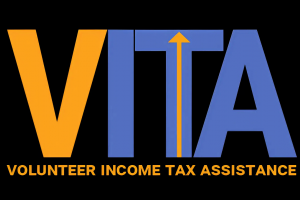The Joint Committee on Taxation (JCT) looked at the impact of adopting the OECD's Pillar Two in a recently report. The analysis looks at the current law for multinational enterprises (MNEs), explains how the Pillar Two deal works, and gives JCT's opinion on how the deal might affect government revenue.
In the JCT analysis, the two most important scenarios are as follows. First, if the rest of the world adopts Pillar Two in 2025 but the U.S. does not change its own laws, JCT estimates that the U.S. will get $122 billion less in corporate taxes over the next 10 years compared to a scenario where nobody adopts Pillar Two. And second, if both the U.S. and the rest of the world accept Pillar Two, the U.S. will lose $56.5 billion in corporate revenues compared to a world without Pillar Two.
There is still a lot of uncertainty, though, about how big the effect will be and maybe even what way it will go in. This is because nobody knows how corporate profits will change in response to new policies.
For completeness, JCT also modeled two unlikely situations in which the U.S. uses Pillar Two but the rest of the world does not. Since these aren't likely to happen, we won't talk about them here.
More Foreign Taxes Mean More Foreign Tax Credits
How does a tax deal between countries cut government income? There is a process that is indirect but pretty clear.The U.S. has many successful global multinational corporations with big U.S. parent companies. It also has many controlled foreign corporations (CFCs) that work in other countries. In general, the U.S. taxes income from CFCs based on rules like Subpart F of the tax code or the global intangible low-taxed income (GILTI) section of the 2017 Tax Cuts and Jobs Act. Under these rules, however, it gives most foreign fees back.
Pillar Two is meant to raise tax rates in many foreign countries. It gives countries a motivation to raise their rates to at least 15%. This might not seem to have much to do with the U.S., which has a legal rate of 21 percent. But higher rates abroad mean that CFCs pay more foreign taxes. In the end, this means that more foreign tax credits are used to reduce U.S. taxes.
Whether or not the U.S. uses Pillar Two, this simple system still works. Both the current CFC rules and the rules for CFCs in Pillar Two say that domestic taxes come before CFC taxes. In both cases, the JCT's estimate of less money coming in is driven by higher foreign tax credits.
A Key Ambiguous Behavioral Response
JCT's analysis has a second part, which is a behavioral reaction called "profit shifting" that is built into its baseline. This has a much less clear effect on how much money the government gets. In fact, the JCT analysis gives a very large range for the effect: it could raise government revenues by up to $224,2 billion over the next 10 years, or it could cut them by up to $174,5 billion.To understand why JCT isn't sure how people will act, we need to first define what profit moving is. Abstract assets, which aren't physically "located" anywhere, can often be easily moved from one jurisdiction to another, taking their income with them. Firms are thought to put these intangibles in the places that will benefit them the most. Among other things, tax is often a big part of these choices.
Pillar Two has a number of rules that are meant to discourage moving profits to places with low taxes (actual rates of 15% or less). JCT thinks that these rules will have an effect, which will cause U.S.-controlled multinational enterprises (MNEs) to move their profits out of low-tax countries.
The problem, and the reason why JCT doesn't know if this change will raise or lower federal tax revenues, is that JCT doesn't have strong theories about where profits go after they are squeezed out of low-tax jurisdictions.
If the gains go to the U.S., that's good news for U.S. tax revenues because the U.S. has a bigger tax base. But if the gains go to a different foreign country with a higher tax rate, that is bad news for U.S. tax revenues. The income is still subject to U.S. CFC rules, but it comes with more tax credits than before.
This makes a little less sense, but look at it from the point of view of a U.S. Treasury that only wants to make as much money as possible.
- Plan A is for companies to record income in the U.S.
- Plan B is for companies to record income in low-tax jurisdictions. This isn’t as good as recording income in the U.S., but it means relatively little use of foreign tax credits, leaving more money for the Treasury.
- Plan C is for companies to record income in higher-tax jurisdictions and make liberal use of U.S. foreign tax credits.
Pillar Two's Undertaxed Profits Rule (UTPR) can also affect moving profits into the U.S. if the U.S. doesn't take steps to make its rules match those of Pillar Two. Under OECD rules, U.S. companies could be charged UTPR, which is essentially an extraterritorial penalty for having an effective tax rate of less than 15%. This could make MNEs less likely to send mobile income back to the U.S.
Wide Confidence Intervals
Not all JCT scores are equally certain. While JCT is extraordinarily precise on the impact of, for example, a reduction in headline tax rates, it might be less precise on provisions that are new or unusual. This is a JCT estimate subject to more uncertainty than usual.
- There is uncertainty about the eventual nature of the actual policies being estimated, especially relative to JCT analysis of fully-drafted domestic legislation. JCT is making assumptions about future policies from other countries based on a framework that is far from complete. Some of JCT’s key assumptions are documented in the analysis.
- The flexibility of intangible income is challenging. Estimating the impact of shifting income, on top of the already difficult task of estimating the direct impacts of policy, make this a more challenging policy to model than in typical JCT estimates.
- International data is more complex and less harmonized than U.S. data.
- Net figures with offsetting effects are often inherently more volatile than purely positive or negative figures. The potential for offsetting profit shifting and foreign tax credit effects lend themselves to wild swings in estimates.
For now, JCT's opinions about the relative sizes of Pillar Two's effects are similar to those of a Tax Foundation modeling project from 2021, which was based on information and knowledge of the agreement from before:
Conceivably, the higher foreign taxes could increase or decrease U.S. tax revenues. The reduction in profit shifting increases profits booked domestically and taxes on those profits, but the higher foreign taxes assessed result in higher FTCs, reducing tax revenue. In all the scenarios above, the latter effect dominates, and the higher foreign taxes result in net decreases in U.S. tax revenue.
Implications for U.S. Policy
The JCT study brings up some good questions for the discussion of Pillar Two in the U.S. The Treasury Department should think about whether it wants to back a deal that will bring in less money for it. In a joint statement about the JCT study, the ranking member of the Senate Finance Committee, Mike Crapo (R-ID), and the chairman of the House Ways and Means Committee, Jason Smith (R-MO), call it a "lose-lose deal."But it's also important to note that the main way of lowering revenue—the foreign tax credit—is already part of U.S. law, like the global minimum tax that Republicans passed in 2017. The OECD deal just takes advantage of this fact, which has been true for a long time.



























